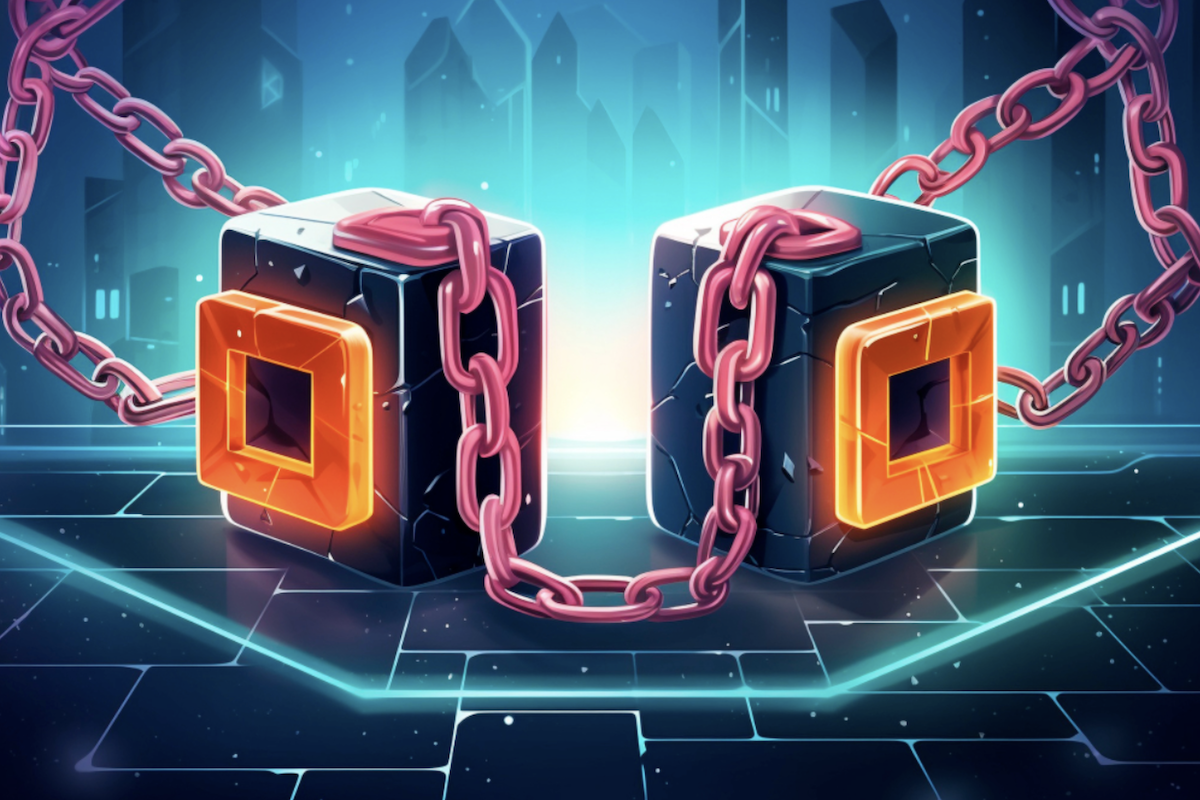Supply Chain Traceability: Tackling Counterfeiting with Blockchain Technology
Explore how blockchain technology ensures transparency, security, and authenticity in supply chains, countering the threat of counterfeiting.

It's crucial to make sure products stay real and safe as they move through the supply chain. But counterfeits mess with this big time.
Thankfully, there's a solution that's shaking things up: blockchain technology.
Let's dive into how blockchain is changing the game in supply chain traceability to tackle counterfeiting.
What is Supply Chain Traceability?
Supply chain traceability is keeping tabs on products or parts moving from production to the end consumer. It's all about recording details like where and when something was made, sourced, and shipped.
It helps boost transparency, accountability, and efficiency in the supply chain, making it easier to control quality, comply with regulations, and respond to what consumers want.
What are Counterfeiting Issues?
- Product Authenticity: Counterfeiters often produce fake goods that mimic the appearance and packaging of genuine products, making it challenging for consumers and businesses to differentiate between authentic and counterfeit items.
- Supply Chain Complexity: In complex supply chains with multiple intermediaries and global distribution networks, it becomes easier for counterfeit products to infiltrate the system as tracing the origin and movement of goods becomes increasingly tricky.
- Regulatory Compliance: Counterfeit products may fail to meet regulatory standards and pose risks to consumer safety and health. Ensuring compliance with regulations across different jurisdictions adds another layer of complexity to supply chain traceability efforts.
- Brand Reputation: Incidents of counterfeiting can tarnish a company's reputation and erode consumer trust. Even a single instance of counterfeit products entering the market can have long-lasting repercussions for a brand's image and credibility.
What is the Blockchain Technology?
Blockchain technology, including enterprise blockchains, is a distributed ledger system that allows digital information to be recorded, shared, and synchronized across a network of computers, creating a decentralized and tamper-resistant record of transactions.
Unlike traditional centralized databases, blockchain operates on a peer-to-peer network, where each participant (or node) maintains a copy of the ledger, ensuring transparency and integrity without needing a central authority.
Key Characteristics
- Decentralization: Blockchain operates as a decentralized network, meaning no central authority or single control point exists. Instead, transactions are verified and recorded by multiple nodes in the network through a consensus mechanism, such as proof-of-work or proof-of-stake.
- Immutability: Once data is recorded on a blockchain, it becomes immutable, meaning it cannot be altered or deleted retroactively. Each new block of transactions is cryptographically linked to the previous block, forming a chain of sequentially linked blocks.
- Transparency: Every transaction recorded on the blockchain is transparent and verifiable, with each participant able to trace the entire history of transactions from the genesis block to the most recent one.
Benefits of Blockchain in Supply Chain Traceability
Here are some benefits of using blockchain technology in supply chain traceability:
- Transparency: Blockchain provides a transparent and immutable record of transactions, enabling all participants in the supply chain to access and verify the authenticity and provenance of products at any point in the journey.
- Enhanced Traceability: With blockchain, each step in the supply chain can be recorded and timestamped, allowing for complete traceability of products from their origin to their final destination. It helps identify bottlenecks, minimize delays, and ensure compliance with regulations.
- Reduced Counterfeiting: The transparency and immutability of blockchain make it difficult for counterfeiters to infiltrate the supply chain. By verifying the authenticity of products at each stage, blockchain helps mitigate the risk of counterfeit goods entering the market.
- Improved Quality Control: Blockchain enables real-time monitoring of product quality and conditions throughout the supply chain, allowing for early detection of issues such as spoilage, contamination, or tampering, enabling timely interventions to maintain product integrity and safety.
- Efficient Recall Management: In a product recall or safety issue, blockchain facilitates rapid and precise identification of affected batches or products, minimizing the scope and impact of the recall and enhancing consumer safety.
- Streamlined Compliance: Blockchain simplifies compliance with regulatory requirements by providing a comprehensive and auditable record of all transactions and activities within the supply chain.
- Increased Trust and Collaboration: By providing a secure and transparent platform for sharing information, blockchain fosters trust and collaboration among supply chain stakeholders, leading to more efficient and cooperative relationships.
- Cost Savings: Blockchain can help reduce costs associated with fraud, disputes, delays, and manual paperwork in the supply chain. Blockchain contributes to overall cost savings for businesses by streamlining processes and reducing inefficiencies.
Best Practices for Implementing a Blockchain-based Supply Chain Traceability System
- Collaborate with Stakeholders: Engage with all stakeholders across the supply chain, including suppliers, manufacturers, distributors, retailers, and regulatory authorities, from the early stages of implementation.
- Ensure Data Accuracy and Integrity: Implement data validation checks, such as digital signatures and cryptographic hashing, to verify the authenticity and integrity of transactions. Regularly audit and validate the data to detect and prevent errors, inconsistencies, or tampering.
- Maintain Data Privacy and Security: Prioritize data privacy and security by implementing robust encryption, access controls, and privacy-enhancing technologies.
- Promote Interoperability and Standards: Adhere to industry standards, such as GS1, ISO, or W3C, for data formats, protocols, and identifiers to ensure compatibility and interoperability across the supply chain ecosystem.
- Educate and Train Users: Offer training sessions, workshops, and online resources to teach users how to use the system effectively, interpret blockchain data, and troubleshoot common issues.
Conclusion
As industries continue to embrace blockchain-based traceability solutions, we can expect to see a future where consumers can confidently trace the journey of products from production to consumption, ensuring safety, integrity, and sustainability in global commerce.
Main Image Photo by Shubham Dhage on Unsplash





